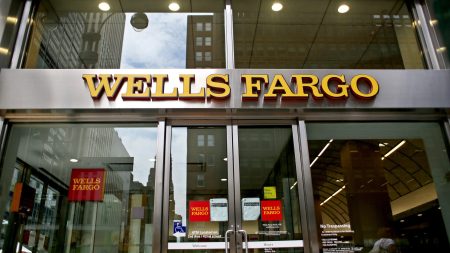Key takeaways
- A checking account is for managing your day-to-day finances, such as paying bills, making debit card transactions and writing checks.
- A savings account is for storing funds for emergencies or short-term goals, and the money typically earns a modest amount of interest.
- An effective money management strategy incorporates both of these accounts, with funds transferred regularly from checking to savings after bills and other expenses are paid.
Savings and checking accounts help you manage money, but they differ in their use. In addition to having both accounts, it’s important to understand the purpose each serves when it comes to managing your money in the short and long terms.
Differences between checking and savings accounts
A checking account helps you manage your day-to-day finances, such as paying your bills, receiving direct deposit of your paycheck and withdrawing cash from an ATM.
A savings account is a place to build an emergency fund or set aside money toward a specific goal, such as an upcoming vacation.
Here are the main differences between a checking and savings account and why you should have both.
| Checking account | Savings account | |
|---|---|---|
| Primary use | Spending | Saving |
| Interest | Sometimes, but usually minimal | Yes, interest rates vary by bank |
| Common fees | Monthly maintenance fee, overdraft fee, out-of-network ATM fee | Monthly maintenance fee, minimum balance charge, savings withdrawal limit fee |
| Minimum balance | Varies by bank | Varies by bank |
| Limits on transfers | None | Six each statement cycle, in most cases |
What is a checking account?
Checking accounts are easily accessible and are used frequently for everyday transactions, such as transferring money, debit card purchases or writing checks. To make transactions convenient, checking accounts usually come with a debit card, checkbook and mobile app with payment features, such as online bill pay and Zelle.
The downside, however, is that banks often don’t pay interest on funds in checking accounts. As such, it pays to keep money not needed for day-to-day expenses in another account that bears interest.
When shopping around for a checking account, there are three key features to look for:
- No monthly maintenance fees (or easy ways to waive them)
- Free access to a large ATM network
- No or low overdraft fees
It’s also worth finding out if a new account sign-up bonus is available. You may be able to earn $100 to $500 — or more when you open a checking account and set up direct deposit.
What is a savings account?
With savings accounts, funds are less accessible since these accounts are made to store money for financial goals. Checks can’t be written against them, and you’re generally limited to a certain number of withdrawals or transfers a month from the account.
Because savings accounts aren’t made for everyday transactions, you’re more likely to store money in the account for longer and collect interest. Savings accounts — especially high-yield savings accounts — typically offer higher annual percentage yields (APYs) than checking accounts, allowing you to grow your money faster.
When looking for a savings account, consider these key factors:
- APY: The higher the APY, the more money you’ll earn in interest. Keep in mind that savings account APYs are variable, so the bank can choose to raise or lower them at any time.
- Balance requirements: Some savings accounts require a high balance in order to earn the APY. Choose an account with a minimum balance requirement that you’ll be able to maintain.
- Fees: Look for accounts with no monthly maintenance fees or providing easy ways to waive them.
- Bonus: Some banks provide a cash bonus in exchange for opening a new savings account.
Similar to checking accounts, you may also earn a bonus for simply opening a savings account.
Do checking and savings accounts pay interest?
A checking account should be a transactional account. Checking accounts are generally not meant for building savings and, as such, many don’t earn any interest.
Savings accounts almost always pay interest. When shopping for the best savings account, it’s wise to look for ones that earn a high APY. This will provide the most growth for your savings.
Many banks have been raising their savings account yields as a result of the Federal Reserve raising interest rates 11 times since March 2022, however, as of late, banks have lowered their APYs in response to the Fed lowering its key benchmark federal funds rate. Still, some of the highest APYs can be found at online-only banks and credit unions.
Keep in mind that rates on savings and checking accounts are variable, so the bank may change the rate amount depending on market conditions.
Should I have both accounts at the same bank?
Keeping your checking and savings accounts at the same bank may be convenient, but it can also have some limitations.
The benefits of having both accounts at the same bank include:
- Convenience: All account information is easily viewed in one statement, web page or app.
- Overdraft protection: You can easily link a savings account to your checking account to cover transactions that would exceed your checking balance.
- Relationship benefits: Some banks allow you to earn a higher APY or waived fees by linking checking and savings accounts at other banks.
The drawbacks of having both accounts at the same bank can include:
- Missing out on account perks elsewhere: One bank may feature a large, convenient ATM network, making it a good spot for your checking account. However, that same bank might not offer a high-yield savings account. In such a case, you might prefer keeping your checking and savings accounts at separate banks.
- Increased temptation to make impulse purchases: Transfers between accounts at the same bank are often completed instantaneously. Some savers find this makes it too easy to spend impulsively by transferring money from their savings to their checking accounts. Instead, they prefer keeping accounts at separate banks, as transfers between these accounts can take up to several days.
Bottom line
Many customers regard checking and savings accounts as one and the same, especially when they hold both accounts at the same bank or credit union, but these accounts serve different purposes. A checking account is a place to park the cash you need to manage your day-to-day finances, from receiving direct deposit of your paycheck, to paying bills and withdrawing cash from an ATM. A savings account, however, is a place to stash your cash for long-term goals, be it to build an emergency fund or to take a vacation. Some savings accounts make it possible to grow your savings by earning a decent amount of interest.
It’s wise to have both a checking and savings account to help you better manage your personal finances and allocate your cash for specific goals. Depending on your financial needs, consider a checking account that makes it easy for you to park your cash for your daily needs, while having a savings account, even if it’s at a different financial institution, to help you save, and possibly grow your cash, for the long term. Many high-yielding savings accounts are available at federally insured online-only banks and credit unions.
FAQs about savings and checking accounts
-
Deposit accounts are safe investments, provided they’re at financial institutions insured by either the Federal Deposit Insurance Corp. (FDIC) for banks or by the National Credit Union Administration (NCUA) for credit unions.This means your funds won’t be lost if the bank fails as long as they are within the limits and guidelines.
The FDIC insures up to $250,000 per depositor, per FDIC-insured bank, per ownership category. Similarly, the NCUA backs balances in checking and savings accounts up to $250,000 per person per account type.You can confirm whether a bank is FDIC-insured using the BankFind Suite. For credit unions, check the NCUA’s searchable database of insured credit unions.
-
Consumers are often limited to six withdrawals or transfers a month from savings accounts due to Regulation D, a Federal Reserve requirement that distinguishes between transaction and non-transactional accounts. Savings accounts are considered to be non-transactional accounts, so the number of transactions may be capped, while transactions above the limit are subject to a fee.The Federal Reserve relaxed the rule in April 2020, so banks can choose to allow customers to make more than six withdrawals or transfers from a savings account each month. Many banks still choose to adhere to the limit, however, by charging a fee when the limit is exceeded.Checking accounts are considered to be transaction accounts, meaning there’s no limit on the number of withdrawals or transfers from them.
-
To open a savings account or a checking account at a branch or online, you’ll likely need to provide the following:
- Government-issued photo ID, such as a driver’s license or passport
- Social Security number
- Your address and phone number
- Bank account information to fund your new account, if applicable
Note that some bank accounts require a set minimum deposit amount, while others have no such requirement. Also keep in mind that if you’ve frozen your credit for security purposes, you may need to unfreeze it before applying for the bank account.
–Freelance writer Ashlee Tilford contributed to updating this article.
Read the full article here










